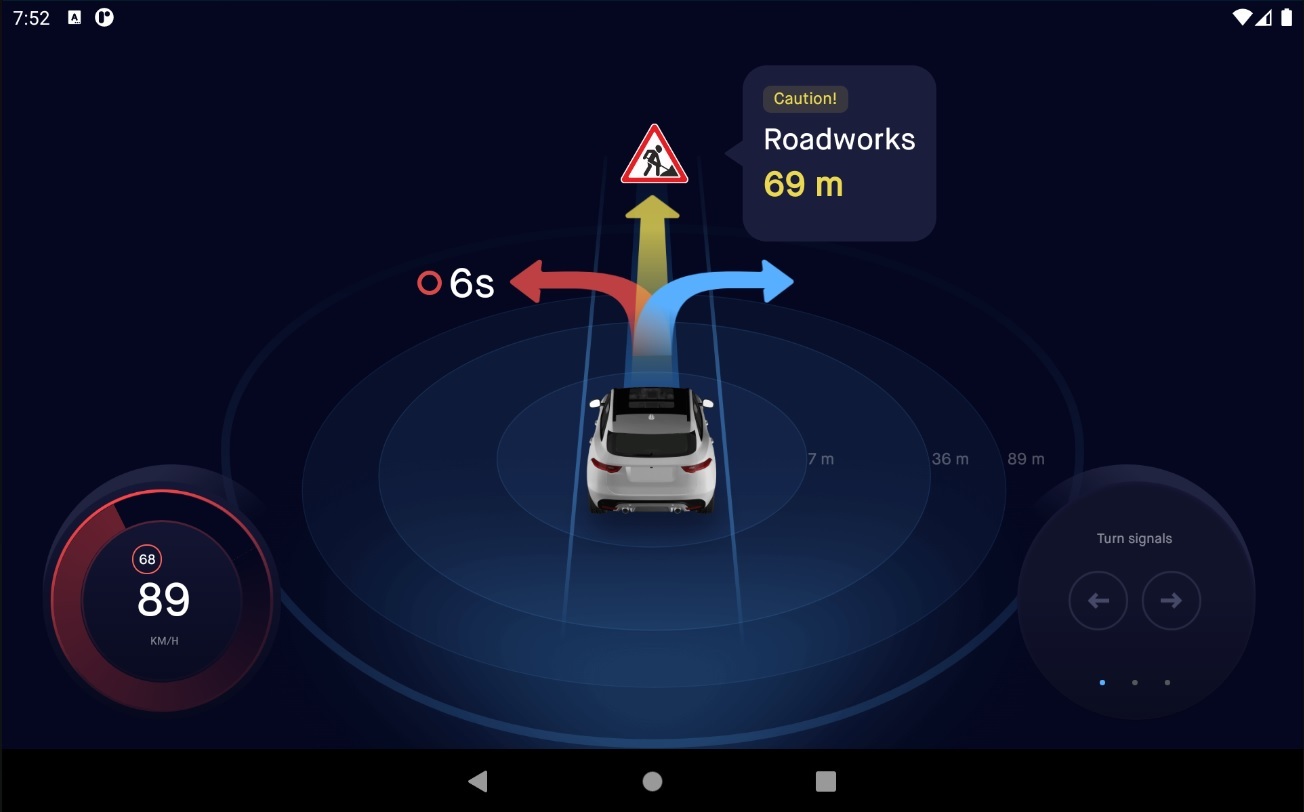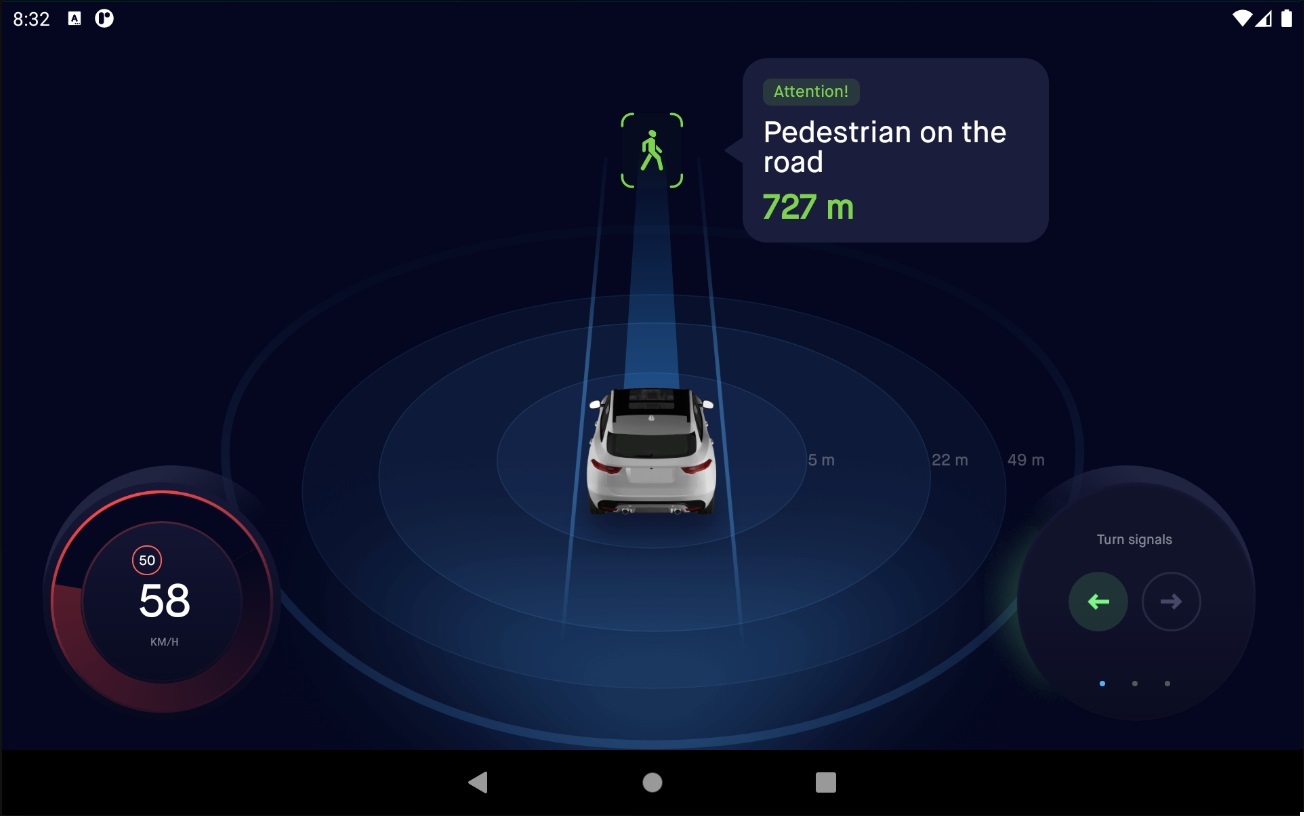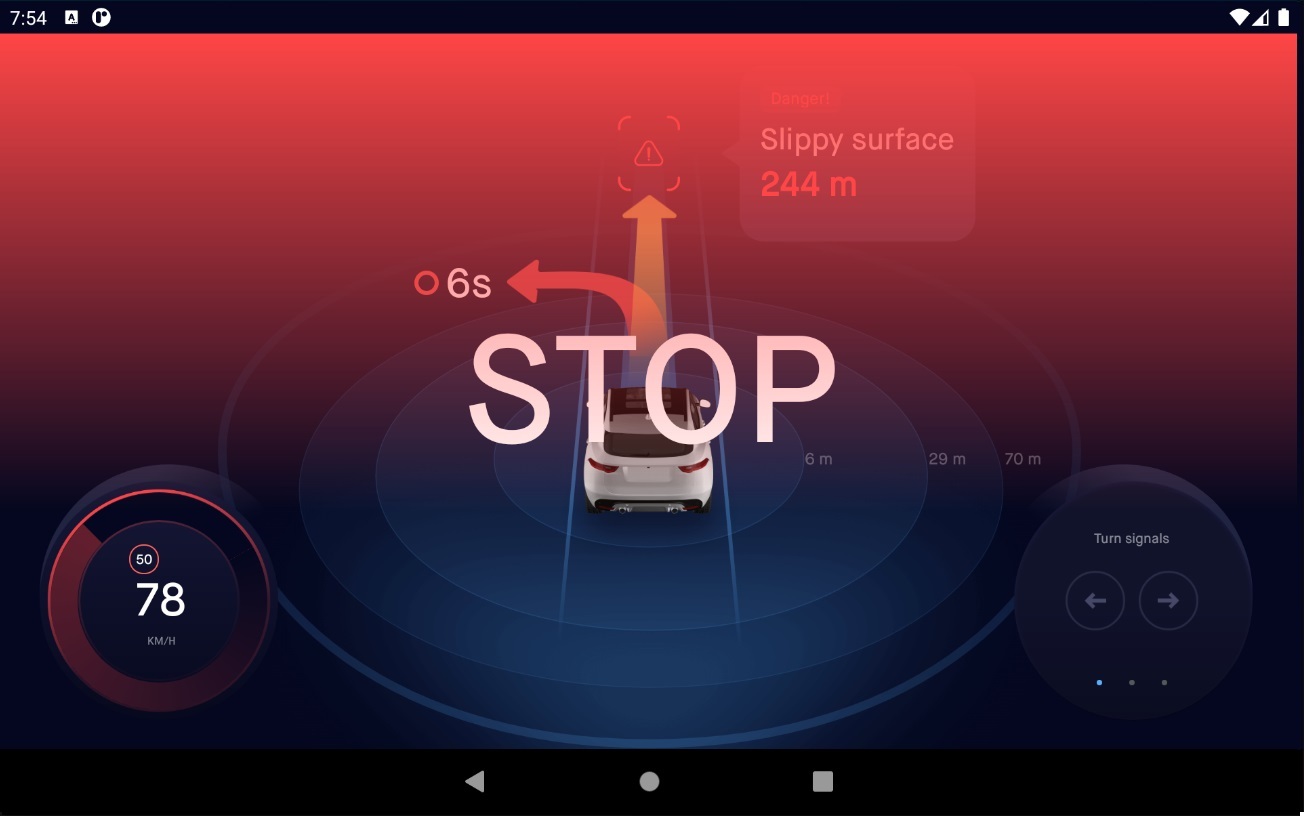V2X Smart Core is a V2X software stack delivered as a Software Development Kit (SDK) for various hardware platforms in transport, facilities and applications according to the customers' needs. The deliverables include SDK and the Ready-To-Use implementation of V2X applications for OBU and RSU.
V2X SDK for OBU/RSU
A driver interface emulator "HMI" is available to demonstrate V2X Smart Core applications developed. The emulator is a mobile application for Android connected to an OBU device. According to scenarios, a driver gets messages. The interface example is shown below, where the built-in car screen via Android Auto displays the information.
HMI Emulator



Supported Platforms
NXP i.MX + Quectel AG15
Autotalks Craton 2
MuRata based on Craton 2 CUT 3
Mikrotik
NXP imx7 + Ublox Vera P 174





Both ITS-G5 and C-V2X modes are supported (based on hardware capabilities).
V2ROADS can port the software to another platform as per customerr request.
V2ROADS can port the software to another platform as per customerr request.
Transport & Networking Layer
GN - GeoNetworking: all packet types
BTP - Basic Transport Protocol.


Facilities Layer
CA - Cooperative Awareness Basic Service
DEN - Decentralized Environmental Notification Basic Service
LDM - Local Dynamic Map: supports DENM, CAM, IVIM
RLT - Road and Lane Topology
TLM - Traffic Light Maneuver
IVI - Infrastructure to Vehicle Information
GPC - GNSS positioning correction
StaPropSvc - Station Properties service
StaStatusSvc - Station Status service
EFCD - Extended vehicle floating car data
MapSvc – store and process map data
Security – security features for GN, CA and DEN
CPS - Collective perception service.













Application Layer
LCRW - Longitudinal Collision Risk Warning
- Emergency electronic brake lights
- Wrong Way Driving
- Advisory Speed
- Roadworks
- Human presence on the road
- Emergency vehicle approaching
- Stationary Vehicle
- Hazardous location.
- Traffic condition.
- Wrong Way Driving
- Advisory Speed
- Roadworks
- Human presence on the road
- Emergency vehicle approaching
- Stationary Vehicle
- Hazardous location.
- Traffic condition.
ICRW - Intersection Collision Risk Warning (including non-controlled and controlled intersections with information about signal phase and timings (SPaT))
RHS - Road Hazard Signalling:



Security Layer
Generation of data packets protected by digital signatures according to the IEEE1609.2 standard using OpenSSL algorithms
Verification of signature and attributes data packages
Support for the requirements of ETSI TS 103097 as a profiling standard for the IEEE1609.2 specification
Downloading, managing and validating of security certificates
Simultaneous support of multiple root certificates and authorization centre certificates
Revocation of root certificates and certificates of authorization centres by means of CRL
Confirmation of root certificates and certificates of authorization centres by means of CTL / ECTL
Security features can be disabled upon customer request.








Supported Standards
ETSI EG 202 798 V1.1.1 (2011-01)
Series ETSI EN 302 636 (2014 -2019)
Series ETSI EN 302 637 (2019)
ETSI EN 302 663 V1.3.1 (2020-01)
ETSI EN 302 895 V1.1.1 (2014-09)
ETSI TR 102 638 V1.1.1 (2009-06)
ETSI TR 103 562 V2.1.1 (2019-12)
Series ETSI TS 101 539 (2013)
ETSI TS 101 539-2 V1.1.1 (2018-06)
Series ETSI TS 102 636 (2010-2011)
ETSI TS 102 637-1 V1.1.1 (2010-09)
ETSI TS 102 687 V1.2.1 (2018-04)
Series ETSI TS 102 723 (2012-2013)
ETSI TS 102 724 V1.1.1 (2012-10)
ETSI TS 102 731 V1.1.1 (2010-09)
Series ETSI TS 102 868 (2020)
Series ETSI TS 102 869 (2020)
ETSI TS 102 894-1 V1.1.1 (2013-08)
ETSI TS 102 940 V1.1.1 (2012-06)
ETSI TS 102 941 V1.3.1 (2019-02)
ETSI TS 102 942 V1.1.1 (2012-06)
ETSI TS 102 943 V1.1.1 (2012-06)
ETSI TS 103 097 V1.4.1 (2020-10)
ETSI TS 103 301 V1.3.1 (2020-02)
IEEE Std.1609.2 v2016b
SAE J2735.


























